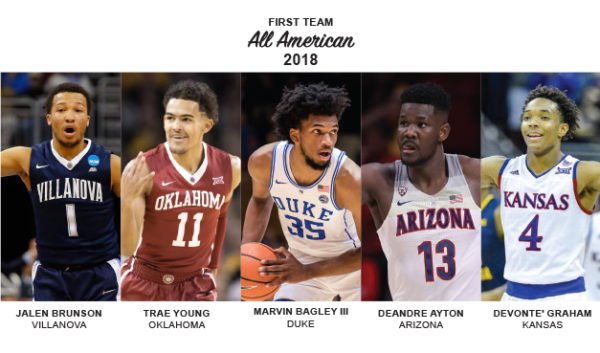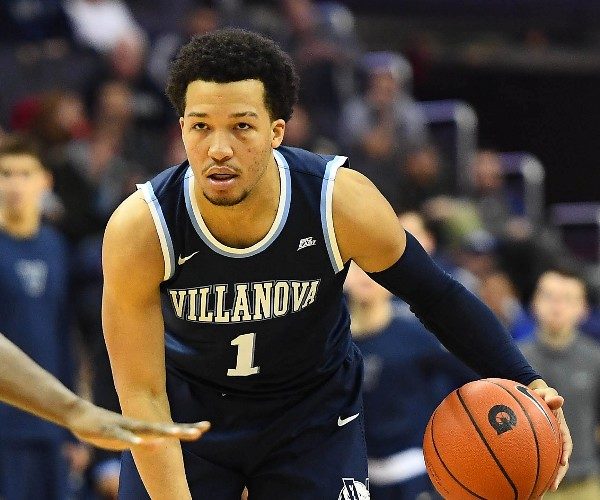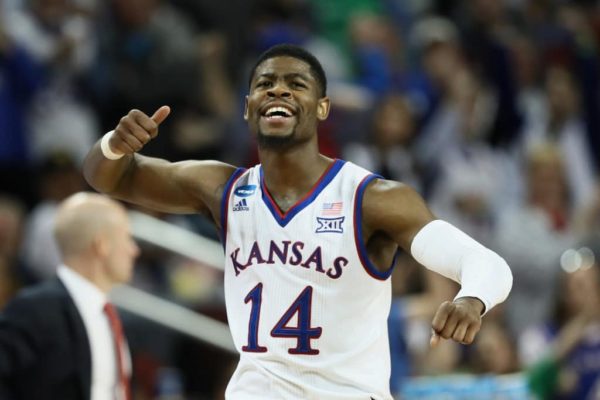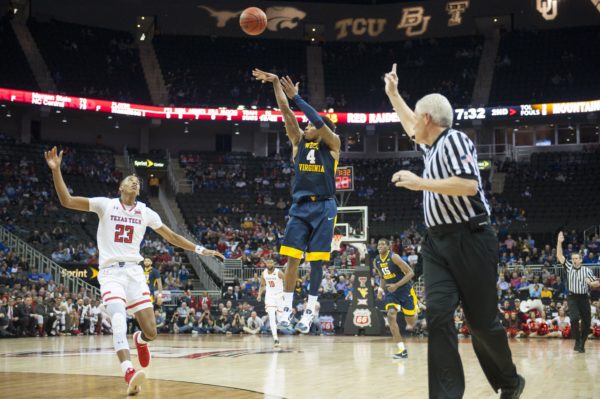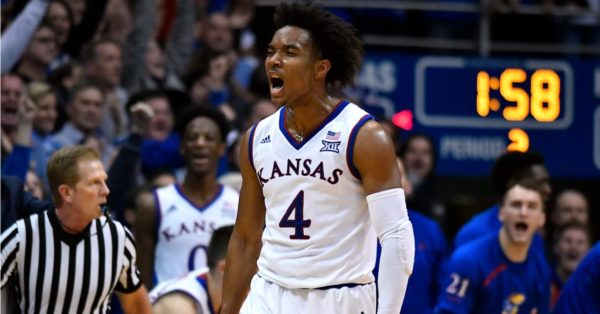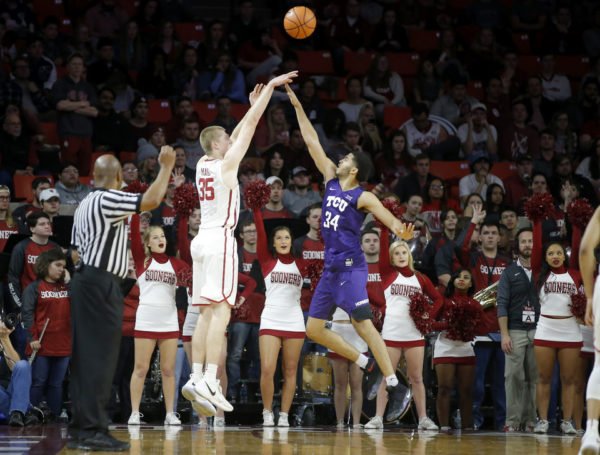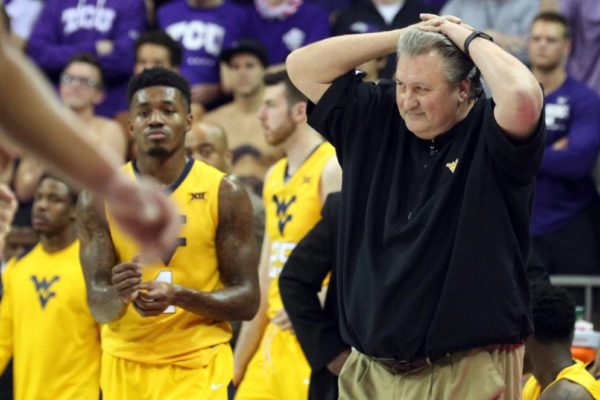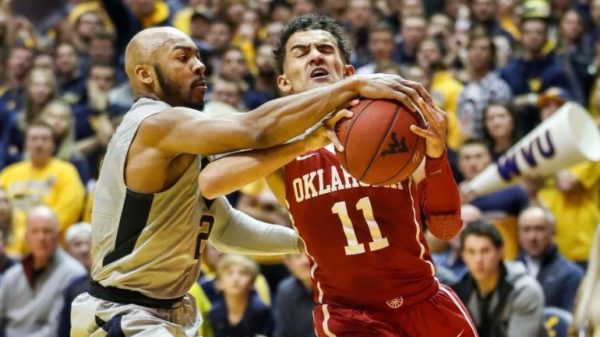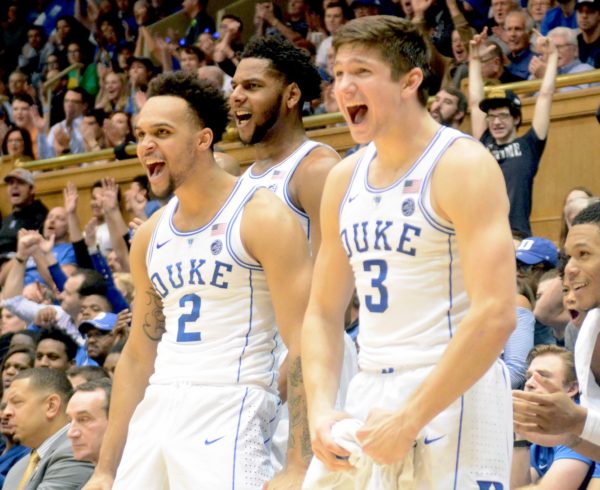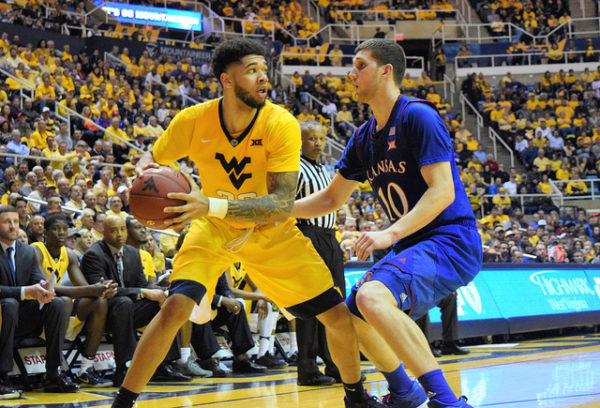2017-18 Rush the Court All-America Teams
Posted by Walker Carey on March 29th, 2018Compiling preseason All-America teams is a difficult task because nobody knows what will come during the regular season. There will always be several players who fall short of expectations and there will always be several relative unknowns who unexpectedly emerge to stardom. When our outfit of RTC pollsters selected their preseason All-America teams in November; nobody could have guessed that only six of the 15 players chosen would live up to their hype: Villanova’s Jalen Brunson; Duke’s Marvin Bagley III; Kansas’ Devonte’ Graham; Xavier’s Trevon Bluiett; West Virginia’s Jevon Carter, and Michigan State’s Miles Bridges.
Here are the 2017-18 RTC All-America Teams.
First Team All-America
- Trae Young, Freshman, Oklahoma (consensus) (27.4 PPG, 8.7 APG, 3.9 RPG). No player dominated the national conversation this season more than Young. The freshman point guard exploded on the scene in remarkable fashion, scoring 43 points in just his fifth collegiate game (a 90-80 win over Oregon) and was both the country’s leading scorer and assist man far into the year. While Oklahoma faltered as a team, Young’s lone season in Norman was so impressive that, after the Sooners lost to Rhode Island in the first round of the NCAA Tournament, head coach Dan Hurley noted, “I made the mistake of watching some of their early games first. I didn’t sleep for a day.” Considering how quickly and easily the point guard jolted onto the college basketball scene, it is not exactly clear if Hurley was being facetious or not.
- Jalen Brunson, Junior, Villanova (consensus) (19.2 PPG, 4.6 APG, 52.7% FG, 41.4% 3FG). Entering the season, Brunson had already developed a well-deserved reputation for being one of the steadiest players in college basketball. He took that perception to another level this season, acting as the face of an extremely even-keeled Villanova team that is headed to another Final Four. There has been a great deal of national discussion regarding how methodical and systematic Brunson appears during the course of a game that even Xavier coach Chris Mack offered his thoughts on the matter. Following his Musketeers losing by 24 at Villanova in early January, Mack implied that Brunson is a robot, stating, “You peel his face off, he’d probably have wires coming out of it.” It is currently unknown whether robots are good at basketball, but it is well-established that the junior point guard is one of the best players in the country.
- Marvin Bagley III, Freshman, Duke (consensus) (21.0 PPG, 11.1 RPG, 61.4% FG). Every so often there is a much-ballyhooed recruit that meets and even exceeds the exorbitant hype that accompanies his arrival to the sport. That was the case for Bagley, as he ensured his only season in Durham was a memorable one. The phenomenally athletic freshman put his stamp on Duke basketball lore, as he became the first Blue Devil since the great Christian Laettner to record a 30+ point and 15+ rebound performance — and he did it four times. Despite missing five games with a knee injury, Bagley still became the school’s all-time freshman scoring leader following a 22-point effort in Duke’s Sweet Sixteen victory over Syracuse. While Duke’s season ended in a disappointing Elite Eight loss to Kansas where the precocious freshman somehow only managed nine field goal attempts, it is impossible to view his sole college season as anything other than a resounding success.
- DeAndre Ayton, Freshman, Arizona (20.1 PPG, 11.6 RPG, 61.2% FG). Ayton was another much-ballyhooed recruit that delivered on years of promise. The Arizona big man’s dominance was expected, but that did not make it any less awe-inspiring to watch the athletic forward overpower his opposition throughout the season. Ayton is considered among the top prospects for the 2018 NBA Draft because of his incredible size — he has an ideal NBA frame and athleticism — but he is far from just an antiquated back-to-the-basket big man. It truly is a shame Ayton’s sensational freshman season will likely be best remembered for both Arizona’s First Round NCAA Tournament flameout against Buffalo and the unsubstantiated ESPN report that he was the prospect being discussed on an FBI wiretap involving an alleged pay-for-play conversation between Arizona coach Sean Miller and former ASM Sports runner Christian Dawkins.
- Devonte’ Graham, Senior, Kansas (17.2 PPG, 7.3 APG, 40.3% 3FG). You know the senior floor general has had a substantial impact on the Final Four-bound Jayhawks when Hall of Fame coach Mike Krzyzewski noted after Kansas bested his Blue Devils in the Elite Eight: “In Graham, you have really one of the great leaders, not just players, in the country. Look, he’s one of the top five players in America, and it’s not just because he scores, but it’s how he leads. When he’s on the court, everybody is better. […] That’s why they’re as good as they are.” The Big 12 Player of the Year has been the straw that stirs the drink for the Jayhawks all season long. He has made big play after big play, and if Kansas hopes to cut down the nets this weekend in San Antonio, it is going to need Graham to play at an elite level.
Second Team All-America





























